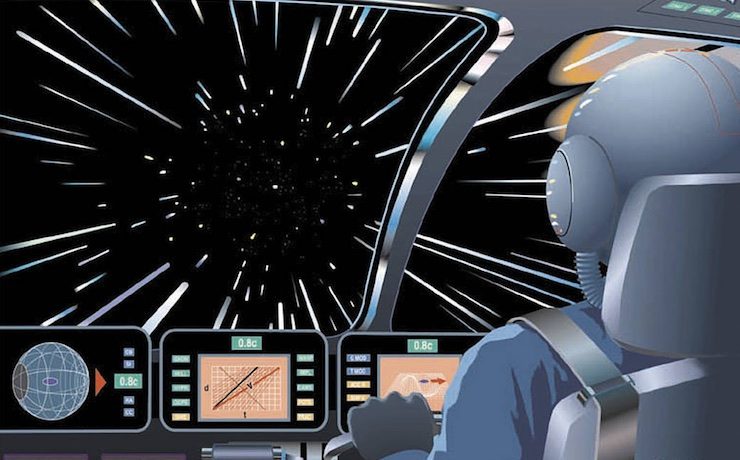Many readers might have been wowed by Arthur C. Clarke’s depiction of humanity’s post-human future in Childhood’s End. For me, the wow moment was this:
The important fact was that I knew how far they had to travel, and therefore how long the journey took. NGS 549672 is forty light-years from Earth. The Overlords ships reach more than ninety-nine per cent of the speed of light, so the trip must last forty years of our time. Our time: that’s the crux of the matter. (…)
From the viewpoint of the passengers on one of the Overlord ships, the journey to NGS 549672 will last not more than two months—even though by Earth’s reckoning forty years will have passed.
As my piece on Bussard Ramjets should have made clear, I love stories in which nearly-as-fast-as-light travel and the attendant time dilation are significant plot elements. Even if the plot doesn’t entirely make sense, the idea of polities that somehow manage to remain in contact with each other despite gulfs of time and space, of people skipping forward through history, will always convince me to give the work a look.
(It’s just this sort of clear-eyed focus on important things and my eagerness to share my thoughts at length that keeps people from inviting me to parties. To think of all that they are missing!)
Here are a few of the time-dilation novels (and one song) that come to mind:
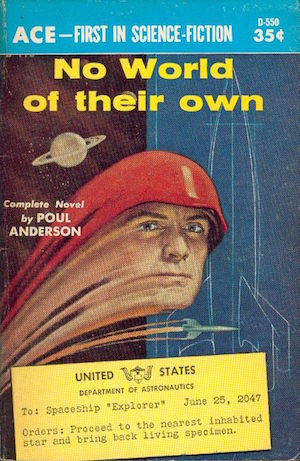
Poul Anderson’s The Long Way Home (published in 1955 as No World of Their Own) is a fine example of what sort of book I will read just to get my time-dilation fix. Believing that they are in possession of a faster-than-light drive, four American astronauts set off on a five-thousand-light-year exploratory voyage. Just one small catch: the drive is actually only speed-of-light, and it is only instantaneous from the perspective of the travellers. By the time the quartet returns home, five thousand years have passed. The USA is gone; every person the four knew is dust.
This novel fails to make sense in so many ways.
- The US believes that they have found a loophole in the theory of relativity. Input from actual physicists seems to be missing.
- Researchers never noticed that the test probes moved only at lightspeed, not faster.
- The US decides to test their crewed starship with an epic journey rather than a quick bounce to Pluto (which would have revealed the flaws in their reasoning).
The book is sexist as well. When it was reprinted in 1978, times had changed; author Anderson wrote a defensive introduction to the reprint, on the order of “Well, the future society is supposed to be bad!”
Incoherence and sexism aside, there’s something to like here. I liked, and still like, the speculation as to how trade and government might work when human-settled planets are so far separated. I read this work over and over back in the Disco era.
Brian May (of the rock group Queen) has a PhD in physics, an interest which has demonstrably influenced his music. Take 1975’s “39” (found on the album A Night at the Opera). Hopeful explorers set out in a starship. For the voyagers, a year passes; for their friends and families at home, a full century. The homecoming is not the happy celebration the explorers had expected.
One has to wonder how this could possibly have come as a surprise to the travellers. Surely time dilation was covered in the mission briefing? But perhaps it was in a footnote. (Nobody ever reads those.) Arguably the May piece is even sadder than the Anderson novel. In the novel, everyone who knew the astronauts is dead. In the music, some of those left behind have survived. One imagines they have lived with betrayal and despair, which misery they share with the returning explorers.
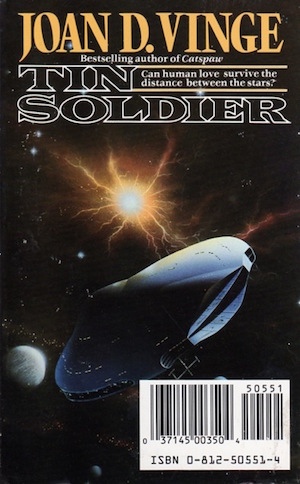
No hope for men with pretensions of following in Captain Kirk’s footsteps in Joan D. Vinge’s 1974 novella Tin Soldier (originally collected in Orbit 14, later reprinted in Eyes of Amber). Starflight is the exclusive domain of women; men, physiologically incapable of serving as waking crew, are consigned to the status of hibernating cargo. The story follows an intermittent romance between two people: a woman whose career as crew leaves her skipping across decades and her immortal cyborg bartender friend, who is making his way through time the slow way.
It is all too common for men to regard woman-dominated fields as therefore of minimal importance and deserving minimal pay. In Vinge’s setting, this is not so. I liked that bit, but it’s not the point of the story. The relationship between star-farer and bartender is.
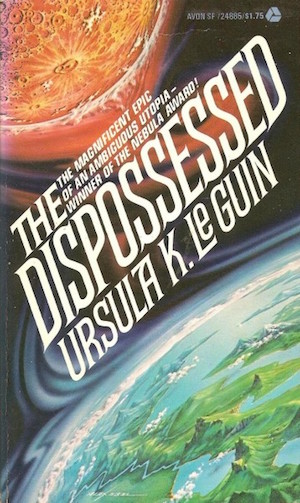
Le Guin’s 1974 The Dispossessed takes place in her Hainish setting, where living beings are limited to Nearly As Fast as Light Travel. Many Hainish stories feature ansibles, communication devices not limited by the speed of light. The Dispossessed is the story of the man who invented the ability to speak across interstellar gulfs. Perhaps not entirely coincidentally, this is also the story of his journey between planets and cultures.
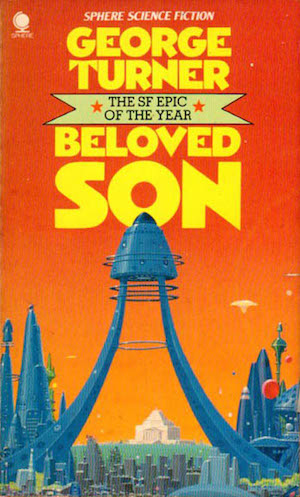
Beloved Son is the first volume in George Turner’s Ethical Culture trilogy. The crew of the Barnard star expedition did understand the implications of relativity. They did not envision how dramatically Earth would have changed in just forty years, courtesy of a civilization-levelling nuclear war. Gone, the blind rivalries that killed billions—in their place, the great international Ethic intended to provide a stable sane world. Commander Raft and his companions will test that stability.
Turner completely flubs the math on a NAFAL round trip to Barnard’s Star. Ah, well. His new world order draws on various tropes that will be familiar to long-time SF readers; what’s impressive is how quickly even the most steadfast adherents of the Utopian Ethic toss it overboard as soon they think they can gain a momentary advantage over their rivals.
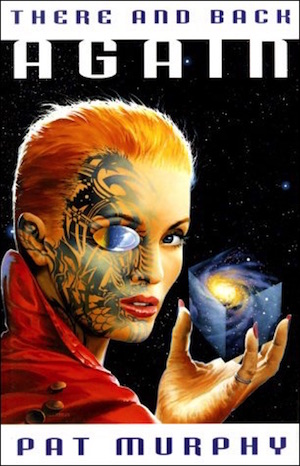
Pat Murphy’s 1999 There and Back Again has faster-than-light travel thanks to a network of wormholes left by a now vanished alien race, with two catches: the aliens didn’t leave a map of their network, and the wormholes only allow passage in one direction. Protagonist Norbit Bailey has no interest in starfaring, but is shanghaied into an unrequested life of galactic adventure.
This was clearly inspired by a well-known tale of a comfortable little man dragged out of his comfortable home and subjected to wilderness camping, trolls, and encounters in the dark. But this exuberant romp is so much more than a one-to-one mapping of fantasy to science fiction. It’s fun. It’s also very thoroughly out of print, boo hiss…
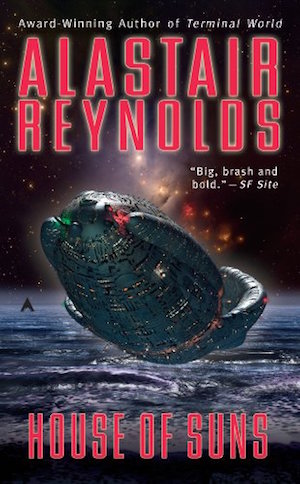
In Alastair Reynolds’ 2008 House of Suns, civilizations abound butplanet-bound civilization is all too mortal, blooming and collapsing over mere millennia. The space-faring Lines provide long-term stability, thanks to their use of relativistic travel. What was intended as a millennial family gathering for the Gentian Line takes a much darker turn when two Gentian clones arrive late to the 32nd Gathering and discover that their relatives have been murdered. Who dunnit and why are obscure. What is clear is that the unseen player on the other side intends complete annihilation of the Gentian Line.
Reynolds embraces the scale of his setting with a plot that spans galaxies and tens of millennia, and a history longer than hominids have existed on Earth. A fine example of a time-dilation novel.
These are, of course, just of few of the time-dilation novels I have enjoyed. I’ve read a lot over the years, but not everything. What do you think should be on this list? Tell us in comments.
In the words of Wikipedia editor TexasAndroid, prolific book reviewer and perennial Darwin Award nominee James Davis Nicoll is of “questionable notability.” His work has appeared in Publishers Weekly and Romantic Times as well as on his own websites, James Nicoll Reviews and Young People Read Old SFF (where he is assisted by editor Karen Lofstrom and web person Adrienne L. Travis). He is surprisingly flammable.










